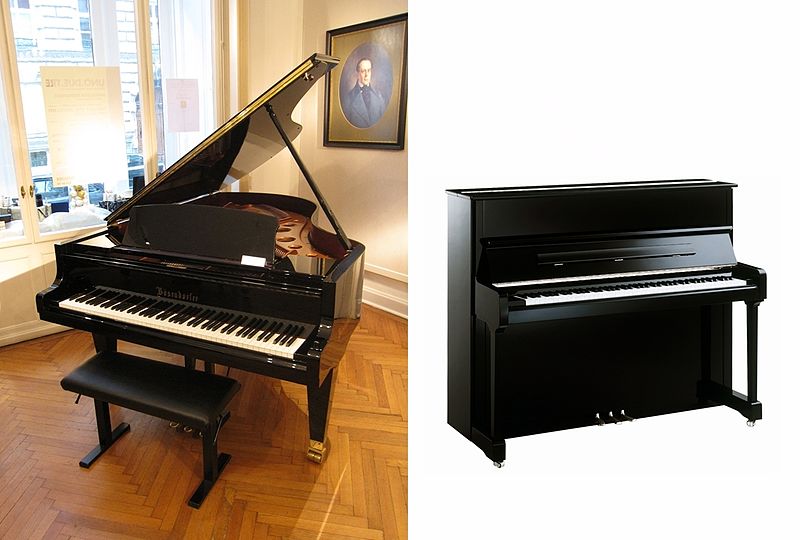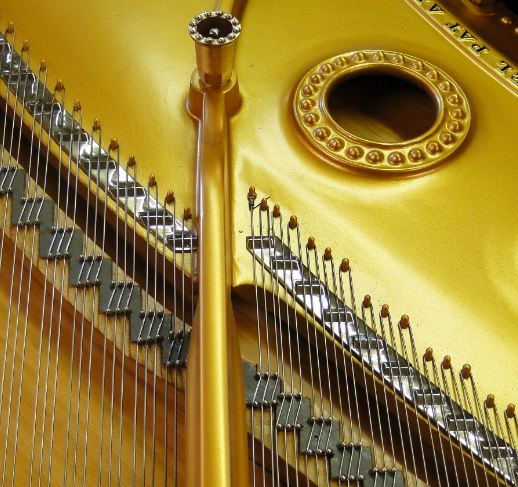The pipe organ is a musical instrument that produces sound by driving pressurized air (called wind) through organ pipes selected via a keyboard. Because each pipe produces a single pitch, the pipes are provided in sets called ranks, each of which has a common timbre and volume throughout the keyboard compass. Most organs have multiple ranks of pipes of differing timbre, pitch, and volume that the player can employ singly or in combination through the use of controls called stops.
The piano was founded on earlier technological innovations in keyboard instruments. Pipe organs have been used since Antiquity, and as such, the development of pipe organs enabled instrument builders to learn about creating keyboard mechanisms for sounding pitches. The first string instruments with struck strings were the hammered dulcimers, which were used since the Middle Ages in Europe. During the Middle Ages, there were several attempts at creating stringed keyboard instruments with struck strings. By the 17th century, the mechanisms of keyboard instruments such as the clavichord and the harpsichord were well developed. In a clavichord, the strings are struck by tangents, while in a harpsichord, they are mechanically plucked by quills when the performer depresses the key. Centuries of work on the mechanism of the harpsichord in particular had shown instrument builders the most effective ways to construct the case, soundboard, bridge, and mechanical action for a keyboard intended to sound strings.

